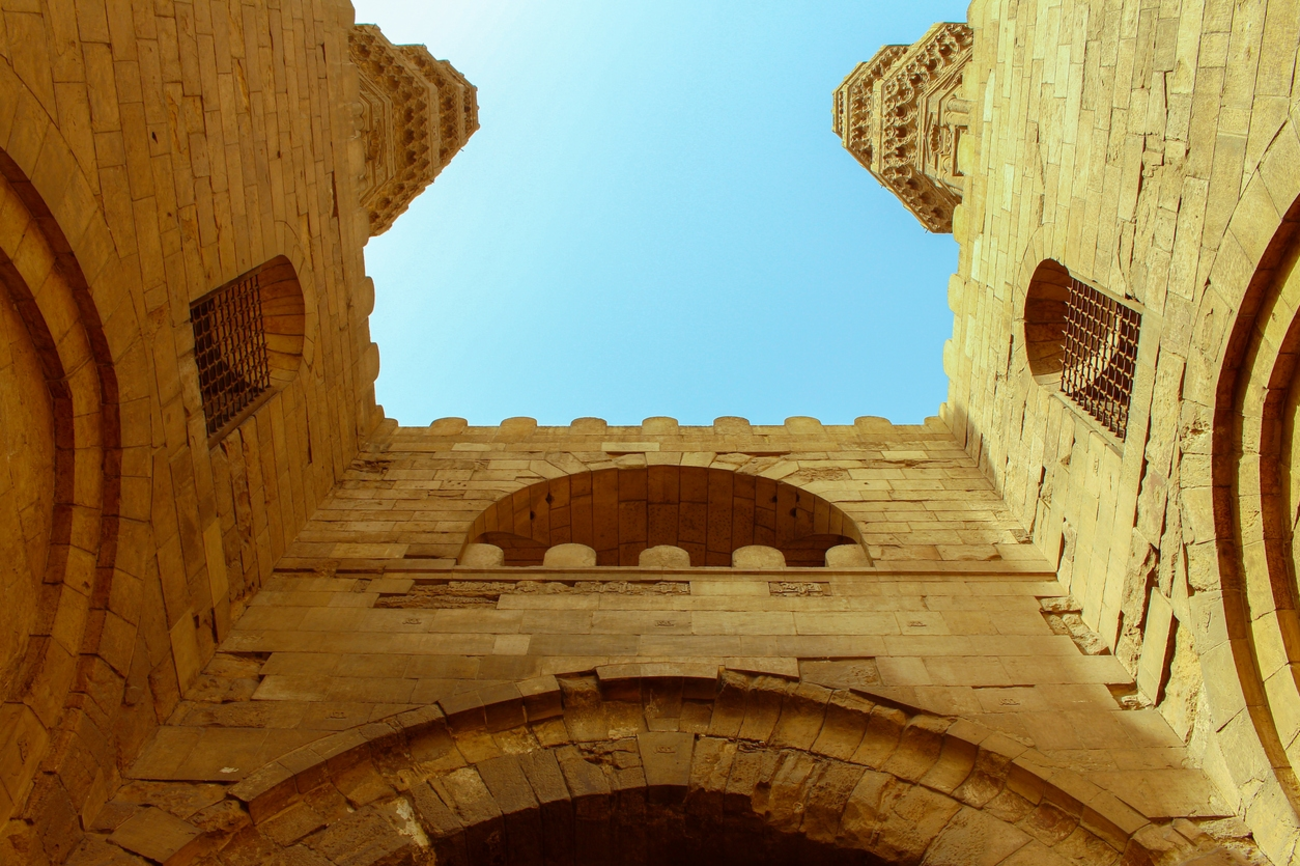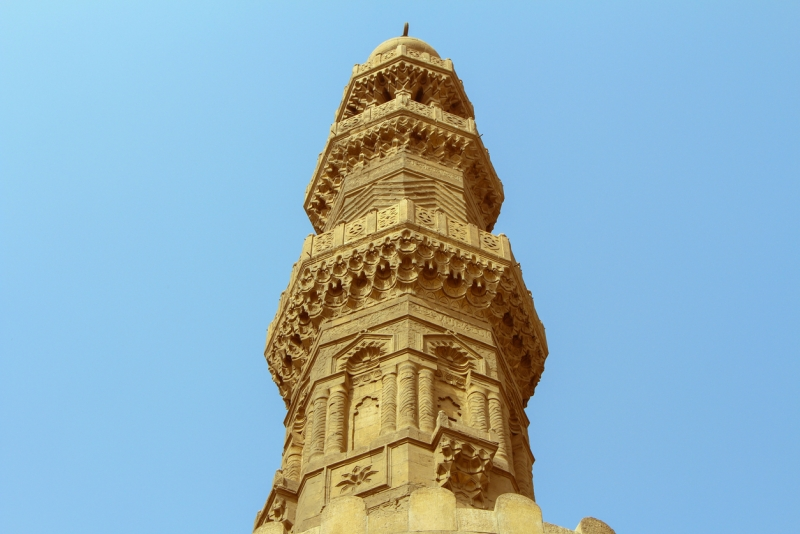Bab Zuweila

Bab Zuweila stands as the last surviving southern gateway of medieval Cairo, where history and legend intertwine. Once the site where executioners displayed the heads of criminals, today it welcomes visitors to climb its twin minarets for breathtaking views of the city. Built during the 11th century, this magnificent structure has witnessed royal processions, public executions, and centuries of Cairo’s ever-evolving story.
Though its past is steeped in drama, Bab Zuweila now represents resilience and beauty. The gate’s grand architecture and historical depth make it one of Cairo’s most captivating landmarks. Beyond its massive wooden doors lies a tale of power, faith, and transformation that spans nearly a thousand years.
The Origins of Bab Zuweila
Fatimid Foundation and Purpose
Bab Zuweila dates back to the Fatimid dynasty’s expansion in Egypt during the late 11th century. It was built as part of the fortified walls protecting Cairo, serving as the city’s main southern gateway. Its design was not merely decorative—it was a vital component of Cairo’s military defense system. The gate controlled access to the capital and stood as a symbol of Fatimid authority.
The Zuwayla Tribe and the Gate’s Name
The name “Bab Zuweila” combines “Bab,” meaning “gate,” and “Zuwayla,” the name of a Berber tribe from the Fezzan region of Libya. Members of this tribe were part of the Fatimid army and were stationed near the gate when Cairo was founded. Over time, their name became permanently linked to this monumental entrance.
The Name “Bab al-Mitwalli”
As centuries passed, the gate gained a new name: “Bab al-Mitwalli.” This title originated from local folklore surrounding a saint named Mitwali al-Qutub, believed to possess miraculous healing powers. People came to the gate to pray for health and blessings, turning the once-military structure into a site of spiritual devotion.

Architectural Marvels of Bab Zuweila
Design and Structure
Bab Zuweila is an impressive example of Fatimid military architecture. The structure features two massive semi-circular towers flanking a central arched passageway. The limestone walls, over 10 meters thick, provide a glimpse into the strategic brilliance of medieval builders. The design was both defensive and ceremonial, combining strength with artistry.
The Twin Minarets
The gate’s most iconic feature today is its twin minarets, which were added in the early 15th century during the reign of Sultan al-Mu’ayyad Shaykh. Rising elegantly above the city, they provide panoramic views of Cairo’s old quarters and the Citadel. Their construction transformed Bab Zuweila from a military gate into a symbol of religious and civic pride.
Decorative Elements
Despite its defensive function, Bab Zuweila is rich in decorative details. The interior surfaces are adorned with carved arches and intricate stonework. The remaining inscriptions display religious verses in Kufic script, reflecting the Fatimid dynasty’s Shi’i identity. The gate’s beauty lies in this fusion of military design and delicate ornamentation.
Ancient Egyptian Stonework
One of the most fascinating aspects of Bab Zuweila is its use of recycled Pharaonic stone. Builders reused massive blocks from ancient temples, integrating them into the gate’s structure. This blending of materials from Egypt’s ancient and Islamic eras gives the monument a unique historical depth.

Historical Roles Through the Ages
A Site of Power and Execution
During the Mamluk era, Bab Zuweila became infamous as the site of public executions. It served as a stage for political displays of power, with the heads of criminals and enemies exhibited above its walls. One of the most notable events occurred in 1260 when Mamluk Sultan Qutuz executed Mongol envoys here—a bold act that preceded Egypt’s victory at the Battle of Ain Jalut.
The gate’s most tragic story is that of Tuman Bay II, the last Mamluk Sultan, who was hanged at Bab Zuweila in 1517 after the Ottoman conquest. His execution marked the end of an era, symbolizing the fall of the Mamluks and the dawn of Ottoman rule.
Ceremonial and Religious Role
In contrast to its grim history, Bab Zuweila also hosted grand celebrations and religious processions. It served as the departure point for the annual pilgrimage caravan to Mecca, known as the Mahmal procession. Sultans and high officials would watch the ceremonies from the platform between the towers, turning the gate into a royal stage of faith and festivity.
Transformation into a Spiritual Site
Over time, the gate became a place of worship and superstition. Locals believed that the saint Mitwali al-Qutub appeared here as a light to heal the sick. People suffering from pain would attach teeth, nails, or pieces of cloth to the gate, believing it would cure their ailments. These curious customs reflected Cairo’s blend of faith, folklore, and daily life.

Customize Your Dream Vacation!
Get in touch with our local experts for an unforgettable journey.
Plan Your Trip
The Mosque of Sultan al-Mu’ayyad
From Prison to Sacred Monument
The story of the nearby Mosque of Sultan al-Mu’ayyad is one of redemption and transformation. Before becoming Sultan, al-Mu’ayyad was imprisoned in a dungeon next to Bab Zuweila. After his release and rise to power, he vowed to replace the prison with a mosque. Between 1415 and 1422, he fulfilled that promise, creating one of Cairo’s most beautiful Mamluk-era mosques.
Unified Design
The mosque and Bab Zuweila were ingeniously integrated. The northern wall of the gate became the southern wall of the mosque, symbolizing the connection between strength and faith. The Sultan added the twin minarets that now crown the gate, turning the fortress into a masterpiece of Islamic architecture.
Interior Beauty
Inside the mosque, visitors find a grand courtyard, marble-paneled walls, and an exquisitely carved wooden pulpit. The mosque continues to serve as a place of worship and community gathering, echoing the Sultan’s legacy of faith and transformation.

Preservation and Restoration
Modern Conservation Efforts
By the late 20th century, centuries of weathering had taken their toll on Bab Zuweila. Between 1998 and 2005, a major conservation project led by the American Research Center in Egypt restored the gate to its former glory. Skilled craftsmen repaired its stonework and massive wooden doors, ensuring the structure’s stability while preserving its historic integrity.
Restoring the Wooden Doors
The restoration of Bab Zuweila’s giant wooden doors was one of the most challenging tasks. Each door, weighing several tons, was carefully cleaned, repaired, and fitted with a modern ball-bearing system inspired by its original mechanism. This work preserved one of Cairo’s most iconic architectural features for future generations.
Community and Future Preservation
Today, Bab Zuweila faces modern challenges such as pollution, traffic, and urban crowding. Conservation efforts increasingly involve local communities to ensure sustainable protection. Plans are underway to pedestrianize the area and make historic Cairo more accessible to visitors while maintaining its authentic charm.
You’ll discover that Bab Zuweila is one of Cairo’s oldest and most important gates, built in the 11th century. It once served as a defensive fortress, a ceremonial entryway, and even an execution site, symbolizing the city’s evolving power and spiritual depth.
You’ll learn that Bab Zuweila was named after the Zuwayla tribe—Berber soldiers who guarded the southern part of Cairo during the Fatimid era. Their legacy lives on through this historic landmark.
You’ll notice its striking twin minarets rising above two massive towers, with limestone walls over 10 meters thick. Some of the stones were even reused from ancient Pharaonic temples, adding layers of history to its design.
You’ll appreciate the extensive restoration carried out between 1998 and 2005. Experts carefully repaired the stonework, wooden doors, and towers to maintain the gate’s original beauty and strength.
You can climb the historic minarets for stunning panoramic views of Old Cairo, explore the nearby Mosque of Sultan al-Mu’ayyad, and immerse yourself in a living piece of Egypt’s medieval heritage.



























